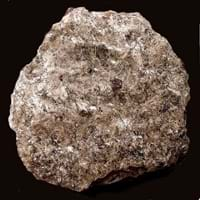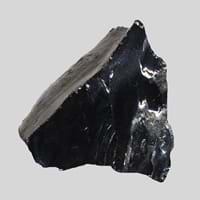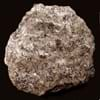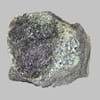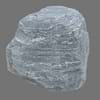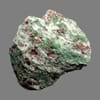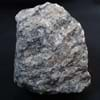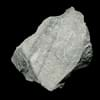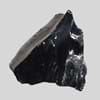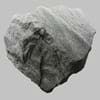Definition
Schist is a medium grade metamorphic rock with medium to large, flat, sheet like grains in a preferred orientation
Anthracite is a type of sedimentary rock which is hard and is variety of coal that has high luster
Origin
Unknown
Pennsylvania, U.S.
Discoverer
Unknown
Unknown
Etymology
From French schiste, Greek skhistos i.e. split
From Greek anthrakites, from anthrax, anthrak meaning coal
Class
Metamorphic Rocks
Metamorphic Rocks
Sub-Class
Durable Rock, Medium Hardness Rock
Durable Rock, Soft Rock
Group
Not Applicable
Not Applicable
Other Categories
Coarse Grained Rock, Fine Grained Rock, Medium Grained Rock, Opaque Rock
Coarse Grained Rock, Fine Grained Rock, Medium Grained Rock, Opaque Rock
Texture
Foliated, Platy
Amorphous, Glassy
Color
Black, Blue, Brown, Dark Brown, Green, Grey, Silver
Black, Brown, Dark Brown, Grey, Light to Dark Grey
Durability
Durable
Durable
Appearance
Layered and Shiny
Veined or Pebbled
Interior Uses
Decorative Aggregates, Floor Tiles, Interior Decoration
Not Yet Used
Exterior Uses
Garden Decoration, Paving Stone
Not Yet Used
Other Architectural Uses
Not Yet Used
Not Yet Used
Construction Industry
As Dimension Stone, Building houses or walls, Cement Manufacture, for Road Aggregate, Roadstone
Cement Manufacture, for Road Aggregate, Making natural cement, Steel Production
Medical Industry
Not Yet Used
In Chemical and Pharmaceutical Industry, Manufacture of Aspirins
Antiquity Uses
Artifacts
Not Yet Used
Commercial Uses
Used in aquariums, Writing Slates
Alumina Refineries, Electricity Generation, Liquid Fuel, Manufacture of Soap, Solvents, Dyes, Plastics and Fibres, Paper Industry
Types
Mica Schists, Calc-Silicate Schists, Graphite Schists, Blueschists, Whiteschists, Greenschists, Hornblende Schist, Talc Schist, Chlorite Schist, Garnet Schist, Glaucophane schist.
Semi-anthracite and Meta-anthracite
Features
Easily splits into thin plates, Smooth to touch
Helps in production of Heat and Electricity, Used as fossil fuel
Archaeological Significance
Monuments
Not Yet Used
Not Yet Used
Famous Monuments
Not Applicable
Not Applicable
Sculpture
Not Yet Used
Not Yet Used
Famous Sculptures
Not Applicable
Not Applicable
Figurines
Not Yet Used
Not Yet Used
Formation
Schist formed by dynamic metamorphism at high temperatures and pressures that aligns the grains of mica, hornblende and other elongated minerals into thin layers.
Anthracite forms from the accumulation of plant debris in a swamp environment. When plant debris dies and falls into the swamp, the standing water of the swamp protects it from decay.
Mineral Content
Alusite, Amphibole, Biotite, Chlorite, Epidote, Feldspar, Garnet, Graphite, Hornblade, Kyanite, Micas, Muscovite or Illite, Porphyroblasts, Quartz, Sillimanite, Staurolite, Talc
Calcite, Clay, Clay Minerals
Compound Content
CaO, Carbon Dioxide, MgO
Carbon, Hydrogen, Nitrogen, Oxygen, Sulphur
Types of Metamorphism
Not Applicable
Burial Metamorphism, Contact Metamorphism, Regional Metamorphism
Types of Weathering
Biological Weathering, Chemical Weathering, Mechanical Weathering
Not Applicable
Types of Erosion
Chemical Erosion, Coastal Erosion, Glacier Erosion
Not Applicable
Grain Size
Medium to Fine Coarse Grained
Medium to Fine Coarse Grained
Fracture
Conchoidal
Conchoidal
Porosity
Highly Porous
Less Porous
Cleavage
Slaty
Non-Existent
Toughness
1.5
Not Available
Specific Gravity
2.5-2.9
1.1-1.4
Transparency
Opaque
Opaque
Density
2.8-2.9 g/cm3
1.25-2.5 g/cm3
Specific Heat Capacity
Not Available
Resistance
Impact Resistant, Pressure Resistant, Water Resistant
Heat Resistant, Water Resistant
Deposits in Eastern Continents
Asia
Afghanistan, Bangladesh, Bhutan, China, India, Japan, Kazakhstan, Malaysia, Pakistan, Russia, Thailand, Turkey, Vietnam
Bangladesh, Burma, Cambodia, China, India, Indonesia, Kazakhstan, Malaysia, Mongolia, Pakistan, Turkey, Vietnam
Africa
Egypt, Ethiopia, Morocco, Nigeria, South Africa
Botswana, Kenya, Morocco, Mozambique, South Africa, Tanzania
Europe
Austria, England, France, Georgia, Germany, Italy, Liechtenstein, Monaco, Norway, Slovenia, Spain, Sweden, Switzerland
Belgium, Bulgaria, England, France, Germany, Greece, Hungary, Kosovo, Netherlands, Norway, Poland, Romania, Serbia, Slovakia, Slovenia, The Czech Republic, Ukraine, United Kingdom
Others
Not Yet Found
Not Yet Found
Deposits in Western Continents
North America
Canada, Costa Rica, Cuba, Mexico, Panama, USA
Canada, Mexico, USA
South America
Brazil, Colombia, Guyana
Brazil, Chile, Colombia, Venezuela
Deposits in Oceania Continent
Australia
New South Wales, New Zealand, Queensland
New South Wales, Queensland, Victoria
All about Schist and Anthracite Properties
Know all about Schist and Anthracite properties here. All properties of rocks are important as they define the type of rock and its application. Schist and Anthracite belong to Metamorphic Rocks.Texture of Schist is Foliated, Platy whereas that of Anthracite is Amorphous, Glassy. Schist appears Layered and Shiny and Anthracite appears Veined or Pebbled. The luster of Schist and Anthracite is shiny. Schist is available in black, blue, brown, dark brown, green, grey, silver colors whereas Anthracite is available in black, brown, dark brown, grey, light to dark grey colors. The commercial uses of Schist are used in aquariums, writing slates and that of Anthracite are alumina refineries, electricity generation, liquid fuel, manufacture of soap, solvents, dyes, plastics and fibres, paper industry.
